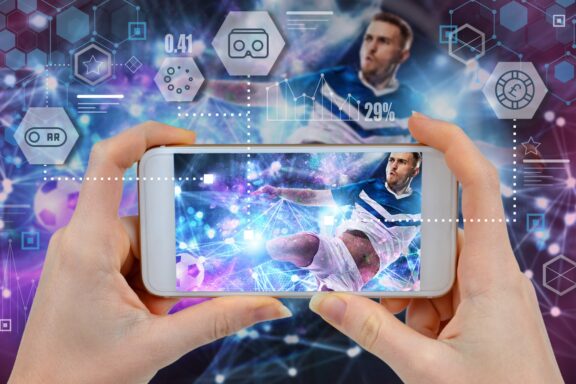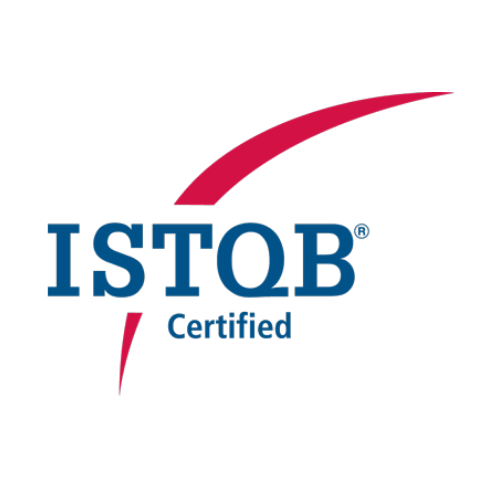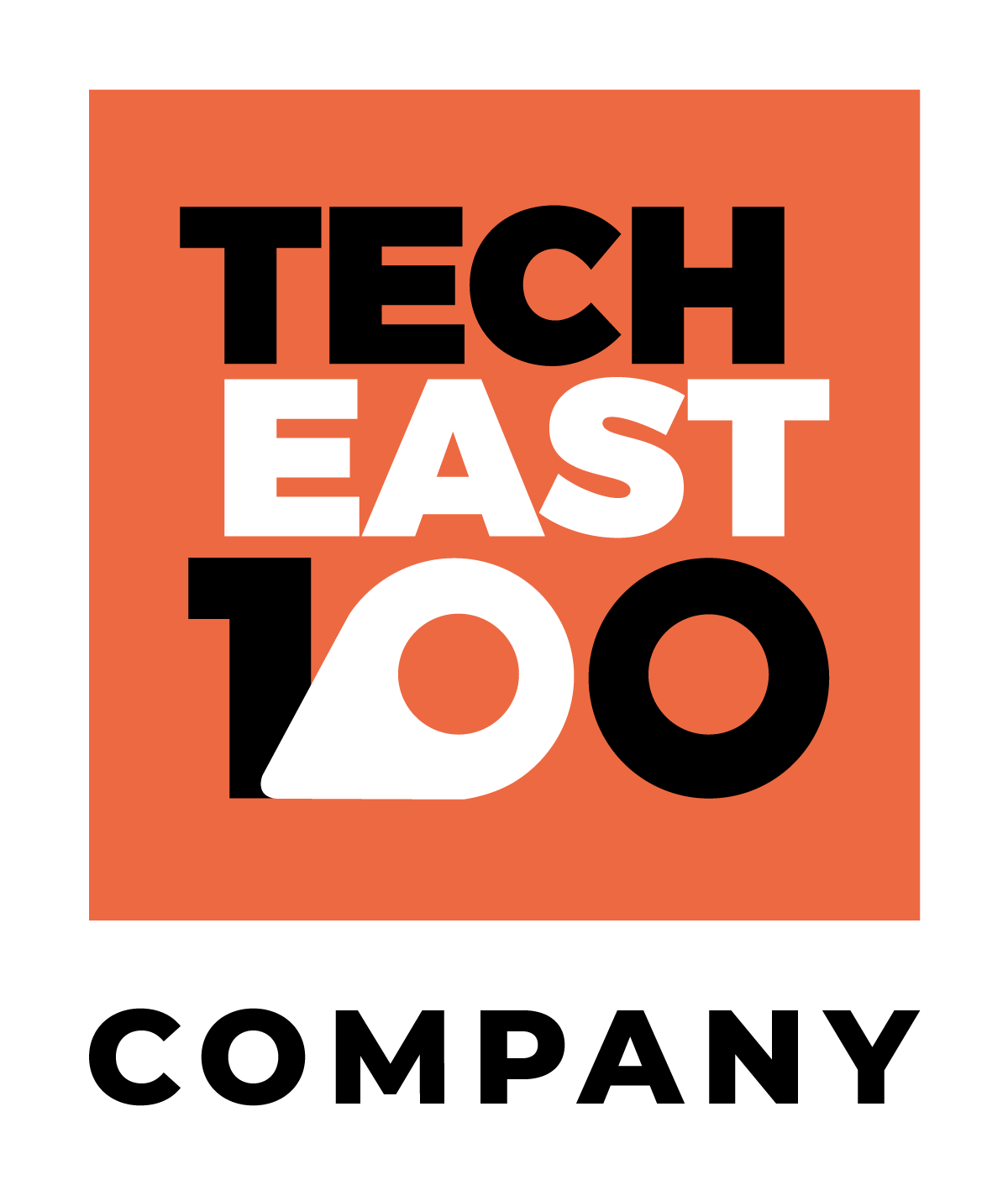Technology is set to play a major role in the growth and evolution of the sporting industry in 2023 and the years following, from enhancing the fan experience to advancing athlete training strategies and creating innovation within sports stadiums.
Read on to find out the top technology trends in the sporting industry covering fan engagement, athlete performance and stadium experience.
Fan Engagement Technology
The fan experience is arguably the most important part of any sporting event and in 2023, we will see technology be used to bring a much more fan-centred approach to sport – especially whilst the restrictions on attending live sporting events continue due to the Covid-19 pandemic.
VR Headsets
Whilst many fans are unable to attend live sporting events, virtual reality (VR) technology can give fans the experience of watching their favourite sport in real life – from the comfort and safety of their own homes.
For example, an avid football fan could live stream a match on a VR headset to realistically simulate the in-stadium experience. This is a great way to add an extra level of excitement to watching sport from a distance.
OTT Content
OTT (Over the top) content refers to the content offered directly to audiences, via the internet. For example, Netflix or Amazon Prime.
It’s expected that in 2023, more sports-specific OTT platforms as well as custom social media apps specifically for these users will appear and will pose a greater threat to the traditional way of watching sports on TV.
With big data and analytics as an advantage, OTT platforms can personalise content to curate user-specific content streams, put together specifically for an individual’s profile based on their perceived interests and past viewing habits.
AR to Create Immersive Experiences
In sports, technology is always there to facilitate a feeling of closeness to our favourite athletes that are scarcely achievable in real life and AR technology takes this to a whole new level.
Some examples of how AR and MR (Mixed Reality) technologies have been used for fan engagement are:
- Iconic tennis tournament Wimbledon’s partnership with American Express offered fans the opportunity to challenge Andy Murray to a match with their interactive, MR powered experience.
- The AT&T Stadium in Dallas, Texas gave fans the ability to take selfies with their favourite Dallas Cowboys players using AR.
In 2023, we can expect to see more examples of the uses of these emerging technologies in creating more immersive fan experiences.
Athlete Performance Technology
Throughout history, athletes have been at the forefront of innovation in healthcare technology and sports tech and this is expected to continue well into 2023 and beyond and sports teams around the world will be able to maximise on the benefits of this.
Technology such as artificial intelligence and big data analysis that improves the training and performance of athletes are expected to become even more commonly used in 2023 as research and innovation within the field advances and they become more accessible to a wider group of people – not just elite athletes and the super-rich.
Neuro Coaching
Typically, neuro coaching refers to practices like meditation, whereby athletes visualise themselves performing optimally before a sporting event as part of their preparation process to help them train their minds to improve their actual in-game activity by creating new neural pathways that benefit learning and development.
However, with technology, we can of course take this a step further in the world of sports. Electrical stimulation can accelerate learning and therefore performance levels. This technique attempts to optimise the cooperation between body and brain to help achieve the optimum state for performance in specific sports.
We can expect 2023 to bring huge advancements in this field, particularly relating to the accuracy and level of results achieved.
Augmented Reality for Injury Analysis
AR has a variety of applications within the sports industry, and in this case, it can be very useful for understanding the status of an athlete’s injury or to accurately monitor the progress of their recovery.
For example, an athlete wearing sensors that monitor their joints, muscles and bones connected an AR visualiser can have the movement and range of motion of a joint observed by their physiotherapist to gain incredible accurate insights on their patient in real-time – displaying the athlete’s bones, joints and muscles as a holographic overlay as they walk or perform an exercise.
This will help to improve the recovery process for many athletes and ensure that they are back at the optimum level of fitness needed to begin training or competing again.
Wearable Sensors and AI
AI is already a vital tool for many athletes but in 2023 we can expect to see its importance grow as its capabilities develop and expand in the sports market.
With wearable technology, heart rate, body temperature, lung capacity and the movement of muscles or joints can be monitored and measured to give useful insights into the ideal training load, overall physical health, the potential for injury and even the mental state of the athlete.
These insights can help push athletes to achieve their optimum output as well as curbing the onset of preventable injuries and extending the length of the athlete’s career.
An example of this trend in action can be seen with the Toronto Raptors who in 2012 experienced the highest number of injuries, but after introducing sensors that track body movement and workload drastically reduced the number of injuries on the team and ended up having the lowest injury figure in comparison with their competitors.
In the future, we can expect to see sensors that are placed under the skin or even inside athlete’s bodies.
Stadium Experience Technology
Research and investment into technology that improves the stadium experience is expected to increase in 2023 and the following years, we will see improved planning, enhanced spectator experiences and added fan entertainment value.
Stadium Apps
In 2023 we can expect to see more and more sports stadiums release state-of-the-art mobile apps developed specifically to improve the experiences of sports fans who visit their stadiums.
These apps will allow spectators to avoid queues by ordering food and beverages to be delivered straight to their seats and provide real-time information about the facilities available.
Crowd Management Technology
When large crowds are eventually allowed back into stadiums, some consideration must be taken into improving the current methods of crowd control. This year, we can expect to see further research and development go into the rollout of these technologies. Soon, we can expect our stadiums to be fitted with sensors that monitor the flow of people and capacity for specific areas in order to provide spectators with real-time information about the least congested exit routes to take via electronic signs or their mobile phones through specially developed apps.
This will improve the management of crowds in stadiums, contributing to improved health and safety standards.
Real-Time Live Betting
To boost alternative revenue streams and create added entertainment value for fans, we can expect stadiums to offer the technology that facilitates real-time live betting in sports stadiums and arenas.
With the rollout of 5G continuing, fans will be able to place bets against friends and fellow spectators while watching a live sporting event and accurately track specific metrics relating to the team’s players to find out in real-time who has won the bet.
For example, two friends might bet that a certain player in a football team will run x amount of miles throughout the game – with this technology they can track the players’ movements and distance covered as the game unfolds to know immediately whether they’ve won or lost the bet.
Sports Specific In-Game Technology & Tracking
Basketball
In basketball, referees use instant replay systems to gain better insight into exactly what happens at all times, giving them a second chance at more accurate decision making to avoid mistakes caused by human error or poor judgement.
Swimming
In order to make timings more accurate, professional swimming pools can be fitted with connected touchpads installed at the end of each lane that can provide officials with the exact times each swimmer reached the end of the race.
This makes the races fairer and less likely to suffer from lower standards due to human errors in judgement.
Hockey
In hockey, technology is being used to create helmets that better absorb shock to prevent serious head and neck injuries in athletes.
In doing this, not only is the safety of players ensured but their careers can also be extended as a result of fewer head and neck impact-related injuries, which can shorten the overall time an athlete can safely play.
Football
U.K based company Hawk-Eye’s technology uses three cameras situated at the goal line, recorded at 600 fps to quickly inform referees of whether a ball has fully crossed the line or not.
The system was first used at a high level in 2012 at the FIFA Club World Cup in Japan after extensive trials and is now licensed for use at 106 stadiums. This helps to improve accuracy and fairness within high-level games.
Hawk-Eye technology is also used at other high-level tournaments and competitions in sports such as in cricket, tennis, hockey, badminton and rugby.
Do you have an idea that could cause disruption in this exciting industry?
Our team is experienced with creating app and software solutions for a range of industries, including sport and endeavour to always work with the latest advancements in tech. Get in touch with our expert team today.























